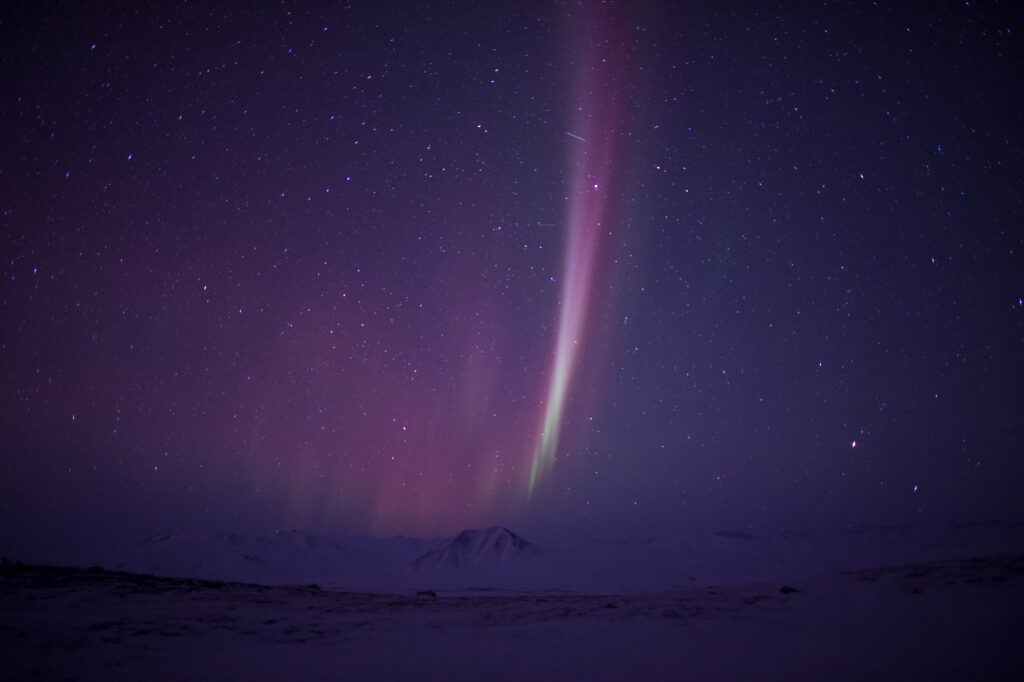After Failed Lease Sales, Alaska Again Gambles Public Money on Arctic Oil

ANCHORAGE, AK — In a quiet but deeply consequential move, the Alaska Industrial Development and Export Authority (AIDEA) has issued a formal request for proposals (RFP) to begin seismic testing in the Arctic National Wildlife Refuge.
The solicitation—AIDEA26-004—invites bids from oilfield services companies to secure approval of exploratory testing during the next four years. A previous proposal, with SAExploration, Inc as the named subcontractor, shows what this would look like: 90,000-pound “thumper” trucks, bulldozers, and other heavy equipment traversing the Arctic Refuge during winter months. The last time seismic was proposed in 2021, 5 million Gen Z youth commented during an ‘Incidental Take’ comment period on Polar Bear impacts. This demonstrates robust interest in the future of the Arctic Refuge Coastal Plain, and what could come next in the permitting process should AIDEA receive seismic bids.
The RFP opened last week, and bids are due by August 4, marking an escalation and rapid turnaround time in Alaska’s push to industrialize one of the last truly wild and ecologically important landscapes in North America. If carried out, this testing would represent the first physical incursion into the Arctic Refuge’s Coastal Plain in decades.
“This is a state-sponsored effort to exploit America’s largest and wildest Refuge. Alaska is using taxpayer money to send bulldozers and thumper trucks into one of the most sacred places left on Earth,” said Kristen Miller, Executive Director of Alaska Wilderness League. “This is worse than a public land sell-off—this is immediate, on the ground destruction. If the Arctic Refuge isn’t off-limits to oil and gas, then nowhere is. This is a moral failure, a climate disaster, and a betrayal of the public trust.”
Seismic Testing: Industrial Destruction Disguised as Exploration
Seismic testing is the first step toward oil development. The process uses convoys of heavy machinery to send powerful shockwaves into the ground, which bounce back to surface sensors and help map potential underground oil deposits. But the cost to the landscape is staggering.
Massive machinery crushes the tundra, shreds fragile vegetation, and accelerates permafrost thaw. In some areas, scars from seismic surveys conducted in the 1980s are still visible today.
Polar bears are among the most at-risk victims. The Arctic Refuge’s Coastal Plain is critical denning habitat for the Southern Beaufort Sea population—already one of the most imperiled in the world. Infrared technology used to detect dens fails over 55% of the time, meaning thumper trucks would likely crush dens and their occupants, or scare mothers into abandoning their cubs.
The First Big Step on the Road to Drilling
This RFP isn’t just about permitting or data collection; it’s the first big step to drilling. Once seismic mapping is complete, industry will next turn to installing pipelines, building runways, constructing roads, and producing massive drilling pads through one of the most ecologically intact landscapes in America.
The bid request appears to favor large seismic contractors, and SAExploration, a Houston-based company with a history Arctic destruction as well as legal and financial troubles, is a likely subcontractor to conduct a seismic program. If a contract is awarded and operations begin, the environmental damage could unfold almost immediately.
A Financial Boondoggle
Even by economic standards, the push to drill in the Arctic Refuge is wildly irrational.
In the first lease sale held under Trump’s 2017 Tax Act, interest from the oil industry was virtually nonexistent. Half the leases were scooped up by AIDEA itself, and the sale generated less than 1% of the revenue projected by the Trump administration—just a few million dollars instead of the billions promised. And not a single bidder showed up in the most recent lease sale earlier this year.
There’s a reason industry players are staying away: Arctic Refuge oil is remote, expensive to extract, and economically obsolete in the face of the global clean energy transition. Now, rather than admitting defeat, AIDEA is doubling down—spending more public money to entice companies into damaging public lands for oil that may never be profitable or even drilled.
Photo Credit: Florian Schulz / www.florianschulz.org
